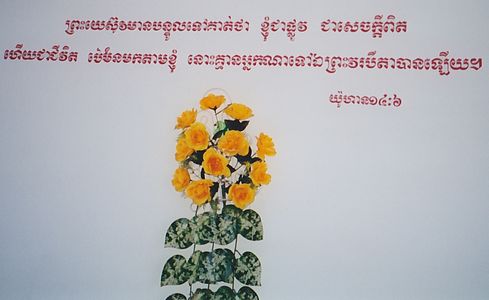The Shape of World Christianity
 In Acts 10:1 – 11:18 the early church is faced with the problem of church growth. Peter has a vision in which God declares that what God has made clean, Peter may not call profane. He visits a Gentile household and talks with them about the good news of Jesus Christ, offering a message of peace and healing to everyone gathered. Peter sees that the Holy Spirit has already been poured out on this group of people, despite the fact that they have not followed Jewish religious customs regarding circumcision and have not been baptized. Peter’s stay with these uncircumcised believers violates Jewish laws, which were still observed by the early church leaders. They call Peter to explain his actions, and when he tells them of his vision, the early church accepts the new uncircumcised believers.
In Acts 10:1 – 11:18 the early church is faced with the problem of church growth. Peter has a vision in which God declares that what God has made clean, Peter may not call profane. He visits a Gentile household and talks with them about the good news of Jesus Christ, offering a message of peace and healing to everyone gathered. Peter sees that the Holy Spirit has already been poured out on this group of people, despite the fact that they have not followed Jewish religious customs regarding circumcision and have not been baptized. Peter’s stay with these uncircumcised believers violates Jewish laws, which were still observed by the early church leaders. They call Peter to explain his actions, and when he tells them of his vision, the early church accepts the new uncircumcised believers.
This action, accepting those who have come to faith in Christ without following the rules or customs in place at the time, would change how Christianity was expressed. The structure and rules of Christianity have been influenced by the people who have come to know Christ, and the structure and rules of Christianity have also been a source of conflict within the church.
Since those early days of the church found in the book of Acts, Christianity has been a “world” religion. Christianity began to spread from the moment people witnessed the resurrection and then traveled out from Jerusalem, telling others as they went about the grace of Jesus Christ. Any attempt to describe world Christianity in 2014 must be mindful of the fact that Christianity was from its beginnings never meant to be confined to a particular area. From the time of Peter’s vision, being the church meant including others, caring for others, and proclaiming the Good News of the grace of Jesus Christ in all places and through all our actions. In this way, the Christian faith was spread.
As a scholar of contemporary forms of mission, I try to be mindful of the ways in which Christians today grapple with the changes and conflicts inherent in the ongoing mission of God to all people. Who can be included? How is worship expressed in different settings? Who has power and authority, how does the church struggle with structural issues, and how do those without power negotiate their lived experience of Christianity within the current structures?
Within the academy I have found two interesting responses to the challenges of understanding world Christianity today. One is that “World Christianity” in some theological curriculums refers to non-Western expressions of Christianity, rather than to a holistic view of the faith. A different response can be found in the American Society of Missiology, which has for the past few years actively sought to engage dialogue regarding the “American” in the name of the academic society. As a society of Missiologists, this group of scholars intentionally seeks to be a group of “world Christians”, expanding the boundaries rather than restricting them. International practitioners and scholars are often given key leadership roles, and officers are carefully selected to ensure that Catholic, Protestant and Evangelical voices are included at every level. ASM embodies unity in diversity, an essential aspect of the global body of Christ.
As a researcher, I continue to listen to the ways in which Christians in the United States understand what is meant by “world Christianity” in our world today. As thousands of US Christians cross national borders in short term mission each year, are they expanding their view of structures and rules of the church? Are they seeking, as David Bosch argues, salvation and survival together through “Christian mission as building a community of those who share a common destiny”? (Bosch 1991, 362)
Christianity will continue to shape and be shaped by the people who encounter the grace of Christ. Through the witness of lives changed by grace, through mercy in word and deed, the proclamation of the good news of Jesus Christ continues to spread from person to person around the world. As did the early church in Jerusalem, today’s church must continue to grapple with the evidence of the Holy Spirit in the lives of those outside the church, and to understand how the church must change to include all those who seek to live out the gospel in their particular cultural context.
Lisa Beth White
PhD Candidate in Practical Theology, School of Theology